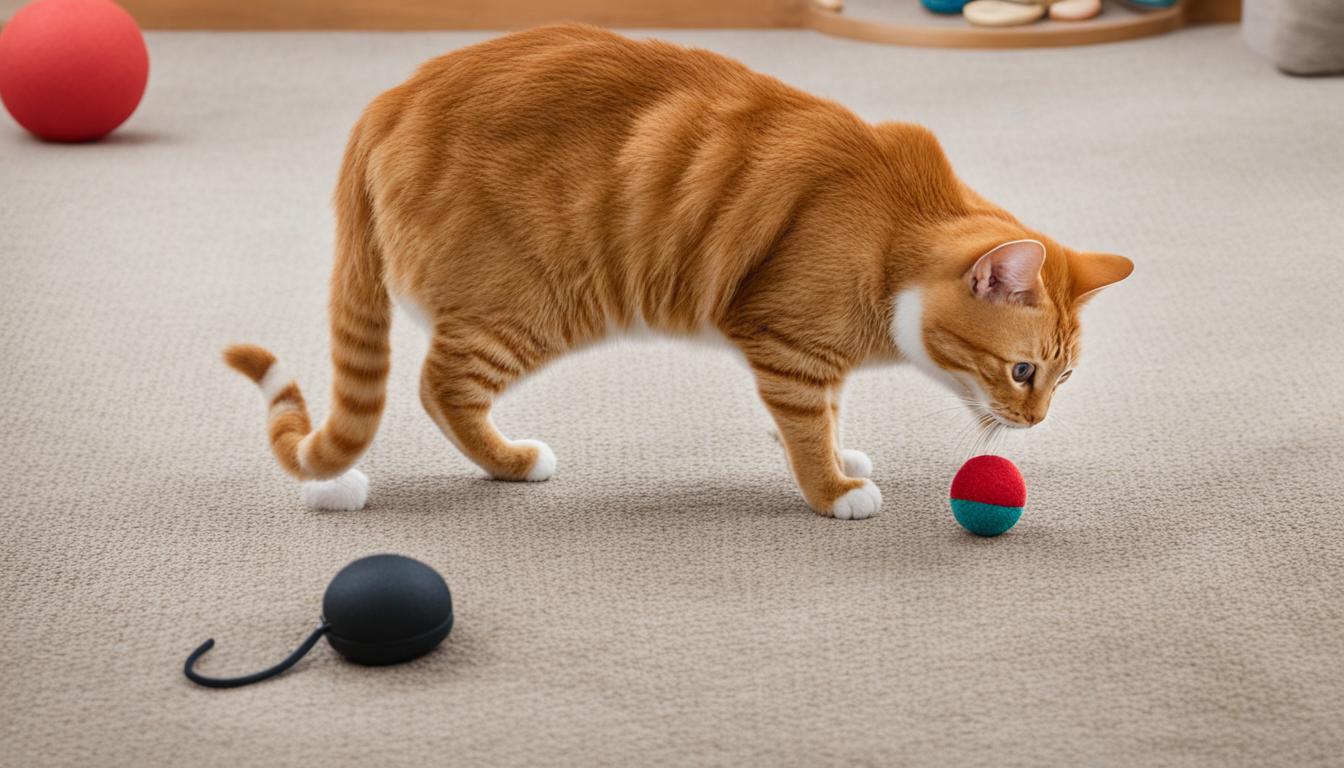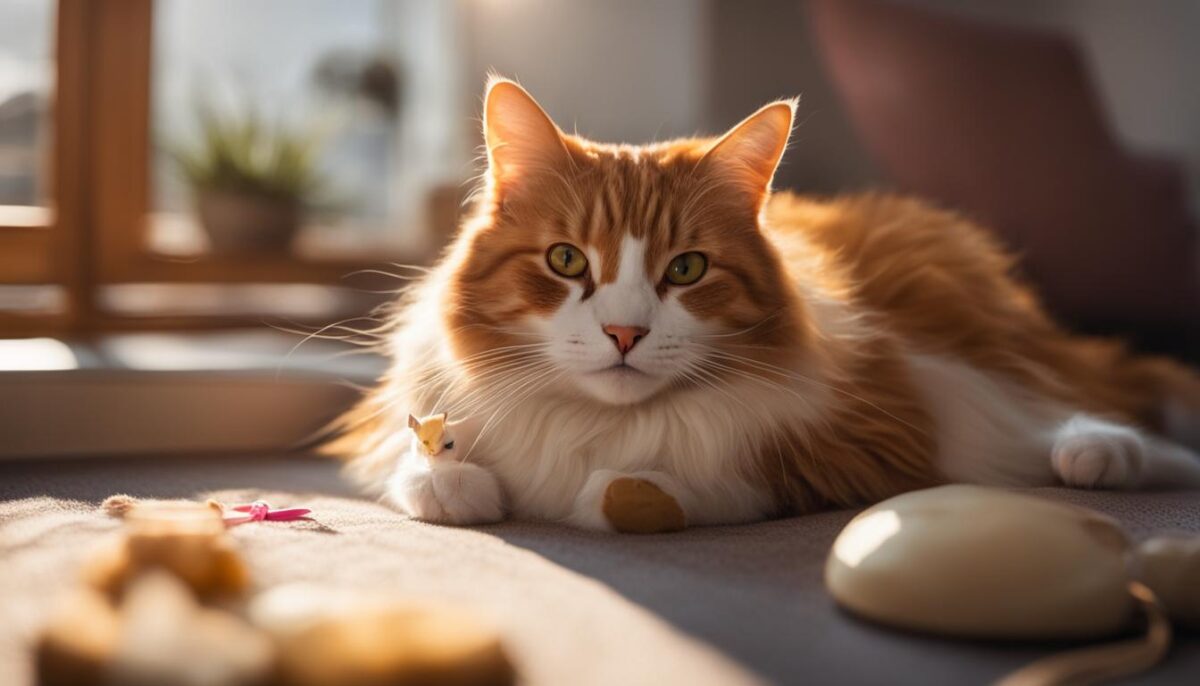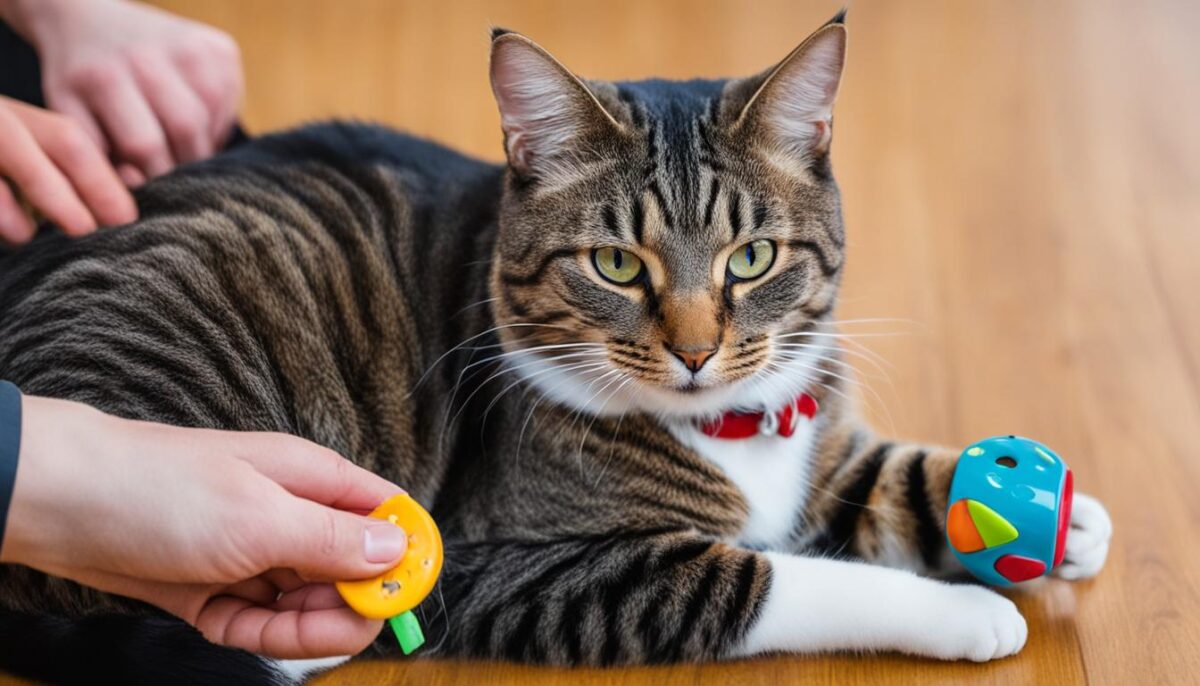Welcome to the world of cat training techniques! If you think that only dogs can learn tricks and follow commands, think again. Your furry feline friend can also master cat obedience with some feline behavior training. You might be wondering, “Can I really teach my cat?” Yes, you can! Training isn’t just for tricks; it makes life happier for you and your kitty. Have you seen cats in shelters? They often need time to learn about new friends like you. With love and patience, you can teach cats to understand and trust you more.
Listening and watching your cat’s body language is very important. When your cat is happy, you might see purring, or a tail straight up in the air. If your cat feels scared or wants to be alone, it might make a tense face or keep its tail low. But don’t worry! With some treats and a little clicking noise from a clicker, teaching your cat can be a fun game! Remember to always use kind words and yummy treats to help them learn. Short and fun times together are the best way to teach your cat new things like sitting or coming when you call.
Key Takeaways
- Friendly cats can learn cool tricks like dogs do.
- Use yummy treats and a clicker to help your cat learn.
- Watch how your cat acts to understand what it feels.
- Happy cats will purr and have tails up in the air.
- Always use kind words and have fun when training.
- Keep teaching times short and without any distractions.
Understanding Your Cat’s Body Language
Hey there, cat lovers! If you want to know what your furry friend is trying to tell you, it’s all about the non-verbal hints they give. Cats are masters at interpreting feline body signals, and they use these to speak to us. Just by watching how they move and the cute faces they make, you can learn so much about what they’re feeling.
When your kitty is happy, you might see them purrr like an engine or swish their tail slowly. If they greet you with their head down, it means they like you! Feel special when that tail pops up – it’s a happy hello flag. ⭐️ But let’s also chat about when your cat might need some space. Cats that are scared go super still, might hide, or curl up small. If their ears go flat, it’s their way of saying, “Please back off.”
If your kitty looks like it’s wearing a halloween costume with all their fur standing on end, they may be telling you they’re feeling defensive. Listen out for a hiss – that’s a clear “stay away” from your cat. And hey, sometimes cats have bad days too; they might even growl, lunge, or bite if they feel threatened.
Now, if you see your cat and they’re all relaxed with their tail up and not all puffy, chances are they’re cool with you coming over. If the tail goes down, that’s their way of saying “I need a little me time”. Understanding this can really help keep things calm and fun while you’re together. 🐾
Let’s break it down a bit more. Check out this nifty table with some cat communication cues you should look out for:
| Feeling | Body Language | What You Can Do |
|---|---|---|
| Happy | Purring, slow tail swish | Give pets and treats |
| Scared | Frozen, hiding, crouched posture | Give them a safe space |
| Defensive | Fur up, hissing | Don’t approach, let them be |
| Upset/Angry | Growling, biting, lunging | Step back and give them room |
| Content/Approachable | Raised tail, relaxed | Feel free to cuddle |
| Uncomfortable | Lowered tail | Respect their space |
The secret is to watch and learn these feline non-verbal expressions so you can be the best cat buddy ever. Remember, it’s just like when you use your words to tell someone how you feel, your cat uses their body to talk to you. So, keep your eyes peeled, and soon you’ll be having full-on kitty conversations!
And here’s a cool kitty picture to show you how these adorable creatures use their body to talk:
Starting with Basic Commands
Hey there! Let’s make it fun and easy for your furry friend to learn some basic feline obedience. First off, grab some yummy treats and a clicker. These are like gold when teaching simple cat commands. Ready? Let’s go!
- For the “sit” command, hold a treat just above your cat’s head and move your hand back a bit. When your cat sits down to look up, press the clicker and give them a treat. Say “sit” so they know what they did right!
- To teach “come,” use a special word or sound every time you give them food. Soon, they’ll come running whenever you call them. Don’t forget to celebrate with a treat!
- Remember to keep training time short – just about five minutes. Cats have tiny attention spans!
Carrier training can be a breeze, too. Pop some treats inside the carrier and give your cat all the time they need to climb in on their own. Each time they go in, say “carrier” and click that clicker. Soon, they’ll hop in without any fuss.
| Command | Hand Gesture | Reward |
|---|---|---|
| Sit | Hand above head moving backward | Click + Treat |
| Come | None, just a vocal call | Click + Treat |
| Carrier | Point to inside of carrier | Click + Treat inside carrier |
With these teachable cat skills, your cat will be following commands and impressing your friends in no time. High-five to that – oh, and yeah, you can teach them that one, too!
The Rewards of Positive Reinforcement
When you teach your kitty, remember that kindness works best. Think of yourself as a coach who helps your cat win at learning. Let’s explore how you can make training fun and rewarding for both of you!
Stocking Up on Treats and Clickers
Treats are like little gold stars for your cat. They say, “Great job!” Clickers are tools that make a sound. When your cat hears it, they know they did something right. Together with treats, they can help your cat understand when they have done well.
Keep the treats your cat loves most ready for each training session. Small and tasty treats work best. And get a clicker from your local pet store. When you press it, it makes a fun noise!
Choosing the Right Time for Sessions
Cats like routine, just like you might have bedtime or snack time. The best time to teach your kitty is when they are not too sleepy or hungry. After nap time is perfect because your cat will be awake and ready to play and learn.
Consistency in Training Cues
Be clear and use the same words and moves each time you ask your cat to do something. This helps your cat know what you want them to do. If you change your signals, your cat might get confused, and learning could take longer.
Remember, training should be fun, a time you both look forward to. With patience and using positive reinforcement for cats, you can teach your cat so many things. They will be happier, and you will be too. And guess what? Your kitty might even give you a high five one day!
Cat Obedience Training
Hey there, cat lovers! If you want a happy kitty that listens, cat training success is totally doable! Teaching your cat right from wrong is not just good for them; it makes your life easier too. Using behavior training for cats stops them from doing things like scratching your favorite chair or hopping on the kitchen counter when they’re not supposed to.
Do you know what works wonders? Something like double-sided tape on furniture or using a scent they don’t like can keep them away from places they shouldn’t be. And guess what? Giving them stuff they can play with, like a scratching post or fun toys, means they’re less likely to be naughty. 😸
Consistently telling them they’re doing great with a treat or a cuddle can make training super fun for both of you. Plus, getting them used to their carrier means you can go on trips without any fuss.
Starting with simple stuff, like teaching them to sit or give high-fives, is impressive and makes your bond even stronger. Remember, teaching your kitty takes patience, attention to what they need, and sticking to your plan. It’s all about those feline teaching methods!
Consistency is key when it comes to teaching your cat. A little patience goes a long way in training your furry friend!
- Use treats to encourage good behavior.
- Keep training sessions short and sweet.
- Teach them cool tricks to show off to your friends.
- Take it step by step, and you’ll see how easy it can be!
So, let’s turn those training times into happy moments with your kitty, and you’ll have the best-behaved cat on the block!
Conclusion
Learning takes time, and this is true when you’re teaching your cat, too. Day by day, your furry friend is picking up on the things you’re showing them. This is where being patient is really important. When you train your cat, you’re not just teaching them commands; you’re building a relationship based on trust and understanding. You’ll find yourself noticing how your cat starts to listen better and shows less fear or anger. These changes are a big deal and show that your cat is learning and growing.
Embracing Patience in Training
Remember, every cat learns at their own speed. So, if things move slowly, don’t worry. Keep going and stick with what you’ve been doing. The more you work with your cat, the better they’ll get at following commands and being a calm and happy pet. It’s all about patience and practice.
Noticing Behavioral Improvements
As you keep up with training, you’ll see your cat getting better at lots of things. They’ll start to feel safer, be less grumpy, and come when you call them. These small wins are exciting for both you and your pet. They help to keep training fun and rewarding.
Further Resources and Support
If you need more help or advice on training your cat, talking to your vet or an animal expert is a great idea. They can give you tips that are just right for your cat’s own way of being. Getting everyone in your family to help with training can also make a big difference. When everyone is working together, your cat learns faster, and your home is a happier place for everyone.
FAQ
Can you really train a cat, and is it similar to training a dog?
Absolutely, cats can be trained, although their training might differ from a dog’s due to their distinct personality and motivational drivers. Cat training techniques focus on positive reinforcement and understanding feline behavior to teach obedience and tricks.
What are some essential cat communication cues that I should know?
Key feline body signals include a raised tail for happiness, flattened ears for fear or distress, and purring as a sign of contentment. Interpreting these and other non-verbal expressions helps you to understand and respond to your cat’s needs.
What are the best simple cat commands to start with for training?
Begin with teachable cat skills such as ‘sit’, ‘stay’, or ‘come.’ Use treats and a clicker, if possible, to mark the desired behavior during these basic feline obedience sessions.
How can positive reinforcement be used effectively in cat training?
Use your cat’s favored treats and a clicker to reward good feline behavior, creating a positive association with the tasks you’re teaching. Consistency with training cues and choosing the right training times are crucial for effective cat discipline.
What are the indicators of cat training success?
Signs of successful behavior training for cats include fewer instances of unwanted behaviors, such as scratching furniture or aggression, and an increased responsiveness to commands and cues.
How long will it take to see progress in my cat’s training?
The timeline for training progress can vary widely depending on the individual cat, their age, temperament, and the complexity of the skills being taught. With consistent training and patience, most owners notice positive feline behavioral development within a few weeks to months.
Where can I find further guidance on cat training?
If you’re looking for more in-depth cat training guidance, consider reaching out to veterinarians, professional cat trainers, or animal behaviorists. They can offer resources and support tailored specifically to your cat’s personality and training needs.


